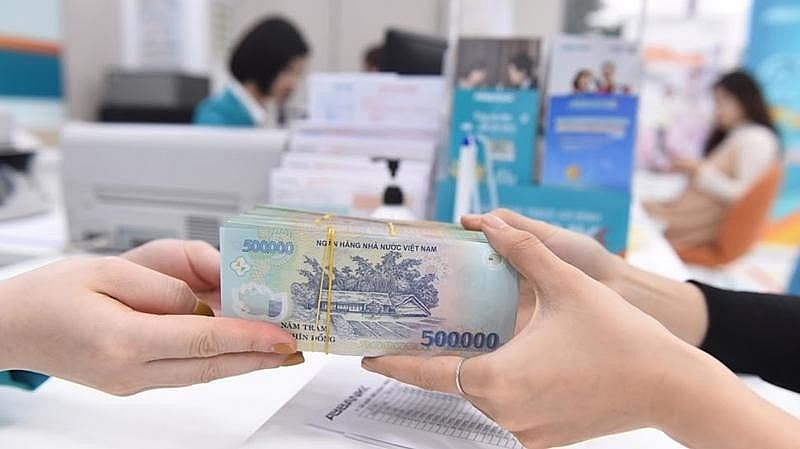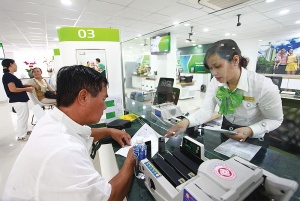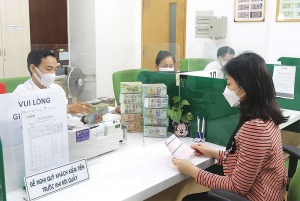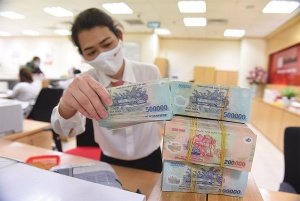Banks set to stimulate credit growth in last quarter
According to the monthly report from the State Bank of Vietnam (SBV), as of the end of August, national credit growth reached 6.63 per cent. However, this growth remains far from the 15 per cent target set by the PM.
 |
| Banks stimulating credit growth last quarter to boost capital demand |
In the context of weaker-than-usual credit demand, this year's race to engage borrowers among banks is more competitive than ever.
“To achieve the full-year credit growth target of 15.75 per cent, TPBank is focusing on maximising its existing customer base and flexibly adjusting lending product policies. We are leveraging our digital banking platform to customise services and products according to the specific needs of our clients,” said Nguyen Hung, CEO of TPBank.
Meanwhile, Agribank has implemented a strategy to increase the scale of its credit package for the forestry and fisheries sector from $125-333 million.
“In light of the economy's limited capital absorption, we are implementing various solutions aimed at promoting safe and efficient credit growth. For instance, Agribank has rolled out 14 credit packages targeting new customers, of which nine are for individuals and five for corporate clients,” said Pham Duc An, chairman of the board at Agribank at the conference for business tasks in the last months of 2024 held late August.
“Agribank has also undertaken four interest rate cuts, with our base lending rates reduced by 0.5-1 per cent per annum. Currently, our lending rates for domestic currency are among the lowest in the market.”
Regarding the race to reduce lending rates to stimulate credit demand by year-end, Tu Tien Phat, CEO of ACB, noted that whether lending rates increased or were kept stable would depend on the resources of each commercial bank. Banks with a high volume of current account savings accounts will be able to balance their cost of capital even as deposit rates rise.
“However, I believe that banks will strive to keep lending rates stable at least until the end of the year. Never before has competition in lending been as fierce as it is now. Especially when banks are required to publicly disclose their average lending rates, any bank that raises its rates will immediately see credit flows shift to banks offering lower rates,” said Phat.
Vietcombank’s overarching goal in its credit growth strategy for corporate clients is to direct capital into large projects and key initiatives that contribute to the sustainable development of the economy.
“With a commitment to providing credit in the near future, Vietcombank's credit growth trajectory is set to increase by 8.2 per cent by September 30, and to 12 per cent by the end of the year,” said CEO Nguyen Thanh Tung at the banking industry conference promoting credit growth hosted by SBV.
“We will focus credit growth efforts on new areas such as industrial real estate. For business operations, Vietcombank's consistent goal is to channel capital into large-scale, key projects that drive the sustainable development of the economy.”
Amid declining market lending rates, VPBank has also introduced various measures to reduce interest rates for secured loans, while interest rates for unsecured loans vary depending on the risk level.
VPBank deputy CEO Luu Thi Thao said, “For corporate clients, VPBank has launched several flexible loan products, especially for small and medium-size enterprises. Following the SBV's extension of Circular No.02/2023/TT-NHNN, I expect this will resolve many issues, helping customers overcome difficult periods while allowing the bank to grow its credit portfolio within this business segment.”
VPBank continues to focus on the foreign direct investment segment, which has become a significant growth driver following its collaboration with Sumitomo Mitsui Banking Corporation. Despite the challenges, the bank is committed to fostering effective credit growth, added Thao.
The "Business Trends of Credit Institutions for Q3 2024" report, published by the SBV Forecasting and Statistics Department, suggested that in the last two quarters of the year, the slight easing of credit standards at financial institutions would continue in a more positive direction compared to the earlier months of the year.
This will occur across all customer segments and most sectors, except for high-risk groups such as securities investment and real estate trading.
“The sectors of wholesale and retail, import and export, steel and other metals, as well as manufacturing and processing industries, have been selected by credit institutions as the primary drivers of credit growth for 2024 and into 2025. As for credit demand, it is expected to improve significantly over the last two quarters of the year, particularly for business customers in the manufacturing and processing industries, as well as for consumer credit,” the report said.
 | Low lending rates may boost credit growth A slight increase in deposits recently has not affected lending rates, which banks are keeping low in hopes of facilitating the flow of credit. |
 | Major commercial banks to lead credit growth in second half of the year Major commercial banks are readying their resources to lead overall credit growth during the peak season of production, business, investment, and consumption. |
 | Lower lending rates stimulating demand for home loans Banks competing over new lending rates under 6 per cent per year have stimulated a resurgence in demand for housing credit. |
What the stars mean:
★ Poor ★ ★ Promising ★★★ Good ★★★★ Very good ★★★★★ Exceptional
Related Contents
Latest News
More News
- Tax sector wraps up 2025 and sets priorities for next year (December 25, 2025 | 14:00)
- A tipping point for digital and hybrid wealth management in Vietnam (December 23, 2025 | 13:33)
- $250 million deal targets women-owned SMEs, sustainable agriculture (December 22, 2025 | 17:40)
- Stock market posts resilient 2025 performance (December 19, 2025 | 18:17)
- Citi Vietnam receives 2025 AmCham CSR recognition (December 19, 2025 | 16:35)
- As global green supply chain reshapes, will Vietnam be left behind? (December 19, 2025 | 08:00)
- Banks gear up for massive capital increases (December 18, 2025 | 17:04)
- Securing capital and efficiency for Vietnam’s 2026-2030 growth ambitions (December 17, 2025 | 10:00)
- Energy sector in need of blended finance mechanisms (December 17, 2025 | 09:00)
- Vietnam still has room to mobilise capital for sustainable growth (December 17, 2025 | 08:57)

 Tag:
Tag:




















 Mobile Version
Mobile Version